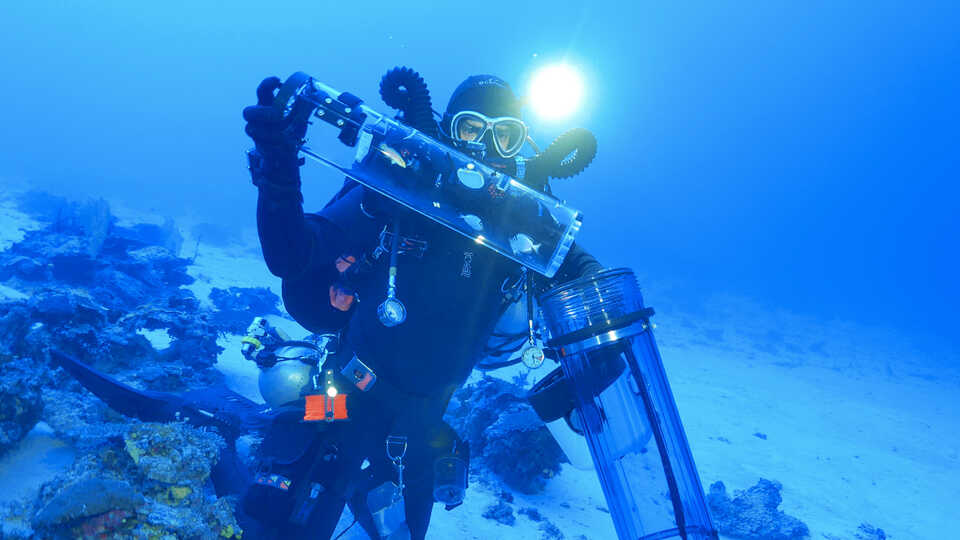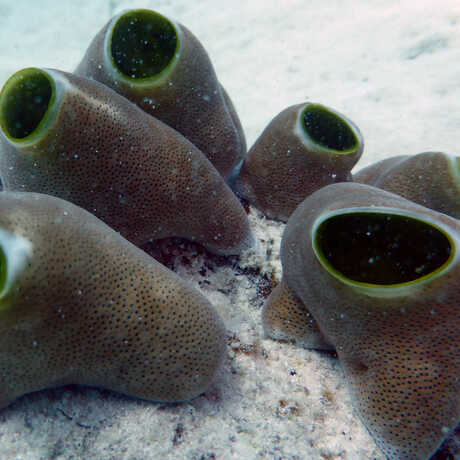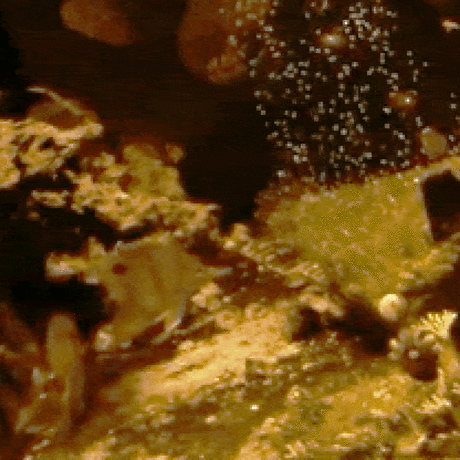Hope for Reefs
Phase II of Hope for Reefs is underway! See how we'll be scaling up our work over the next five years.
Hope for Reefs is a global initiative led by the California Academy of Sciences to research and restore critical coral reef systems.
Considered the “rainforests of the sea,” coral reefs are some of the most biologically diverse, economically valuable, and beautiful ecosystems on Earth. They cover less than 1% of the ocean but contain more than 25% of marine species. Coral reefs provide critical habitat to vast marine communities—from the tiny coral polyps that make up the reef’s foundation to the colorful fish and sharks that live among them. Coral reefs are integral to the livelihoods and well-being of billions of people worldwide, providing protection from erosion and generating income through ecotourism and fishing.
Today, we risk losing these valuable ecosystems. Nearly 75% of the world’s coral reefs are currently threatened by the combined impacts of overfishing, habitat destruction, water pollution, climate change, and ocean acidification. In fact, we’ve already lost at least a quarter of the world’s reefs, with another 30% predicted to die in the next thirty years. Current efforts to save coral reefs are lagging far behind their rate of destruction.
In response, we launched the Hope for Reefs initiative in 2016 to explore, explain, and sustain the world’s coral reefs by making fundamental breakthroughs in coral reef biology; developing new conservation solutions and restoration techniques; and sharing what we know through innovative exhibits and educational media programs.
With key breakthroughs now, we can ensure a healthier, more hopeful future for these vital ecosystems.
To learn more, explore Hope for Reefs' Case Statement and follow the #HopeForReefs hashtag on social media.
Worldwide expeditions to fill in gaps in coral reef knowledge
Academy scientists will embark on twenty expeditions over the next five years to better understand both shallow and deep reef ecosystems across the globe. The Academy has a long history of research in the Philippines, and within the last year, our expedition teams have conducted research in Vanuatu, Pohnpei, the Bahamas, and Palau. Every research trip into the field requires a robust team to monitor coral health, identify new species, and take stock of fish and invertebrate diversity and abundance.
Expeditions will focus on the unexplored regions of the world, including mesophotic reefs and poorly known shallow reef communities in the western Indian Ocean, southern Japan, the Solomon Islands, and the South Atlantic.
Exploring and understanding the role of deep reefs
In the narrow band between light-filled shallow reefs and the pitch-black deep sea, mesophotic coral reefs—located 200 to 500 feet beneath the ocean’s surface—are home to fascinating and diverse marine life.
Information about these reefs is scarce, as accessing them requires technical equipment and physically intense training beyond that of shallow-water diving. A diving technology known as closed-circuit rebreathers, which involves multiple bulky oxygen tanks with custom gas blends and electronic monitoring equipment, allows the Academy’s team of highly skilled scientific divers to explore these depths.
The biodiversity of these deep reefs—known as the “twilight zone”—is mostly unknown. Similarly, we don’t yet understand the ecological relationship between shallow and mesophotic reefs: it’s possible that deep reefs could serve as important sanctuaries for shallow reef species as challenges such as ocean acidification, overfishing, local pollution, and global climate change drive them deeper in search of conditions with fewer stressors.
The Academy’s scientific diving team will continue to visit and study twilight zone sites around the world to shed some light on these potentially crucial reef ecosystems.
A large-scale plan to restore coral reefs with SECORE International
Up until now, efforts to replace and restore coral reefs have been significantly constrained by barriers of time, money, and labor. But an expanded partnership between the Academy and the nonprofit SECORE International will speed up and advance the development and application of science-based technologies for reef restoration, using coral larvae cultured in labs to help replace damaged reefs.
This innovative method begins with gathering coral egg and sperm cells during annual spawning events and cross-fertilizing them. The resulting larvae are cultured on individual, self-attaching units that can be dropped from the water’s surface to implant in the damaged reefs below, allowing for the young polyps to grow into healthy coral heads. This efficient method of deployment bypasses the time and labor typically involved in individually attaching single polyps to the reef.
Using this approach, the Academy pledges to scale efforts globally by placing one million coral seeding units on the world’s most threatened reefs by 2020. Efforts will also focus on offering more conservation training workshops in reef sites worldwide and expanding local partnerships to establish marine protected areas.
Encouraging coral reef advocacy through museum-based education
Sharing our research with the public is an important part of our mission. To nurture public understanding of the role corals play in ocean and global health, and to encourage future advocates and scientists, we’re working to create immersive experiences, educational programs, and aquarium exhibits that focus on the importance of coral reefs and showcase what we’ve discovered on our expeditions.
With our 212,000-gallon Philippine Coral Reef tank as a centerpiece, the recently refreshed Coral Reefs of the World gallery in Steinhart Aquarium allows visitors to marvel at charismatic marine life while learning about the incredible biodiversity found in coral reefs around the world. Now, visitors can also explore how new technology is helping measure this biodiversity by finding one of three Autonomous Reef Monitoring Structures (ARMS) currently in the tank. These devices serve as a sort of multi-layered hotel to house species that are too tiny, elusive, or rare for regular methods of biodiversity monitoring. Just like the ARMS the Hope for Reefs team has deployed around the world, the ones in our exhibit will remain there for several years, after which the reef residents on the structures will be genetically sequenced to determine the number and abundance of species—providing baseline biodiversity data and helping train divers on how to recover the devices.
Twilight Zone: Deep Reefs Revealed highlights the Academy’s cutting-edge work exploring the ocean’s mesophotic region and features rare and newly discovered species from these mysterious deep reefs. And now playing on the Morrison Planetarium’s full-dome screen, Expedition Reef creates an immersive digital coral reef environment for audiences to experience the beauty and wonder of these underwater worlds.
The Hope for Reefs Team
The Academy has spent over a century researching in and around the Coral Triangle, a biologically rich marine located in the western Pacific Ocean. Our multidisciplinary expedition teams include a mix of scientists, aquatic biologists, and educators, who, all combined are well-positioned to develop innovative solutions to help save coral reefs.
Over the next five years, the four co-leaders of Hope for Reefs will help lead the way towards these solutions.
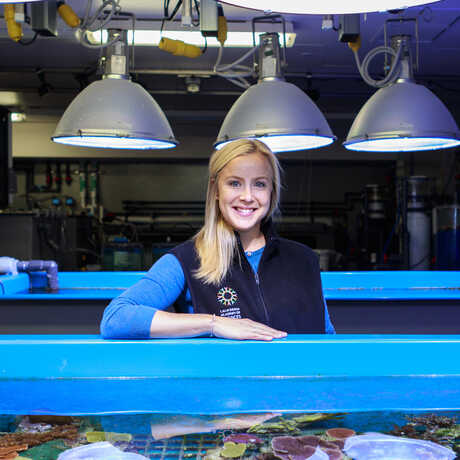
Rebecca Albright
Assistant Curator, Invertebrate Zoology
From single cell interactions to reef-scale processes, Dr. Albright’s work focuses on the ability of coral reef organisms to cope with two of the world’s most pressing issues—ocean acidification and warming seas. Her research includes studying the reproductive success of corals under changing environmental conditions to monitoring environmental conditions in reefs worldwide to study how the ocean’s changing chemistry affects reef growth and loss.

Pim Bongaerts
Assistant Curator, Aquatic Biology
Dr. Bongaerts studies the biodiversity and evolution of tropical reef corals, from the surface to the twilight zone. As a molecular ecologist with a passion for bioinformatics and technology, he combines genomics and field ecology to understand how corals diversify and adapt to changing environmental conditions. He has lead numerous mesophotic expeditions in the Indo-Pacific and Caribbean, using technical diving and remotely operated vehicles (ROVs).
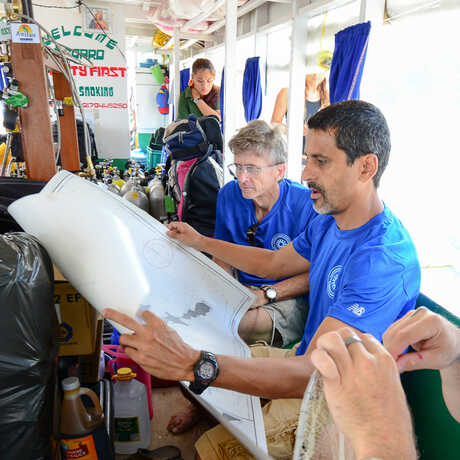
Luiz Rocha
Associate Curator and Follett Chair, Ichthyology
Dr. Rocha studies the evolution and ecology of coral reef fishes, using advanced genomic methods to answer questions about the origins of fish diversity. Understanding the complex relationships of coral reef communities helps Rocha inform conservation policies to protect and restore their habitats. A leader in twilight zone research and technical diving, his current work also includes surveying marine life in mesophotic reefs.
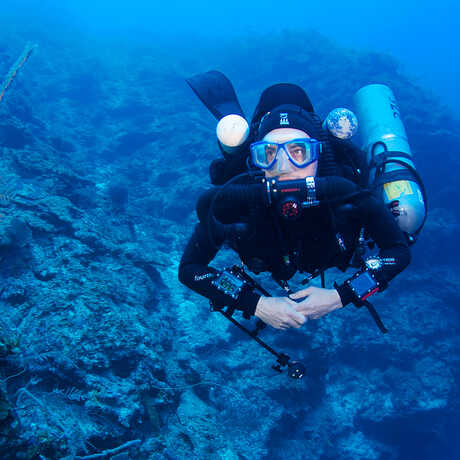
Bart Shepherd
Senior Director of Steinhart Aquarium
Shepherd oversees the Steinhart Aquarium’s large team of biologists and diving staff, as well as its exhibit development and captive breeding programs. An accomplished scientific diver, Shepherd’s knowledge of the twilight zone and the special equipment needed for exploration is critical to the Academy’s deep reef initiative. With the goal of increasing the Aquarium’s work in field-based conservation, Shepherd leads the Academy’s effort to help SECORE expand globally.
bioGraphic: "Spawning an Intervention"
Wired: "Corals Are In Serious Trouble. This Lab Could Help Save Them"
The Atlantic: "What a Giant Soda Stream Reveals About the Fate of Corals"
Scientific American: "Scientists Are Taking Extreme Steps to Help Corals Survive"
Your gift helps support Academy research and programs, including school field trips for 130,000+ students annually.
The Academy's Hope for Reefs initiative is made possible through the support of visionary donors. The Academy gratefully acknowledges the lead partners listed below.
- William K. Bowes, Jr. Foundation
- OceanX, an initiative of Dalio Philanthropies
- Jennifer Caldwell and John H. N. Fisher
- Eva and Bill Price
- Wendy and Eric Schmidt
- Huifen Chan and Roelof F. Botha
- Kingfisher Foundation
- Hellman Foundation
- Frances and Warren Hellman
- Diana Nelson and John Atwater
- United Airlines



